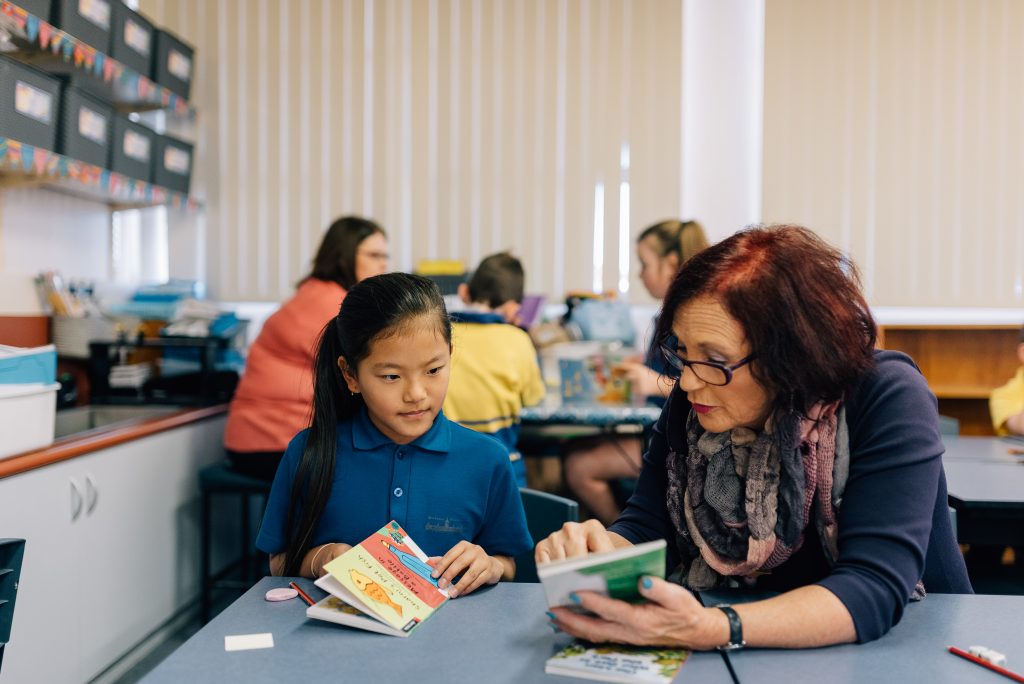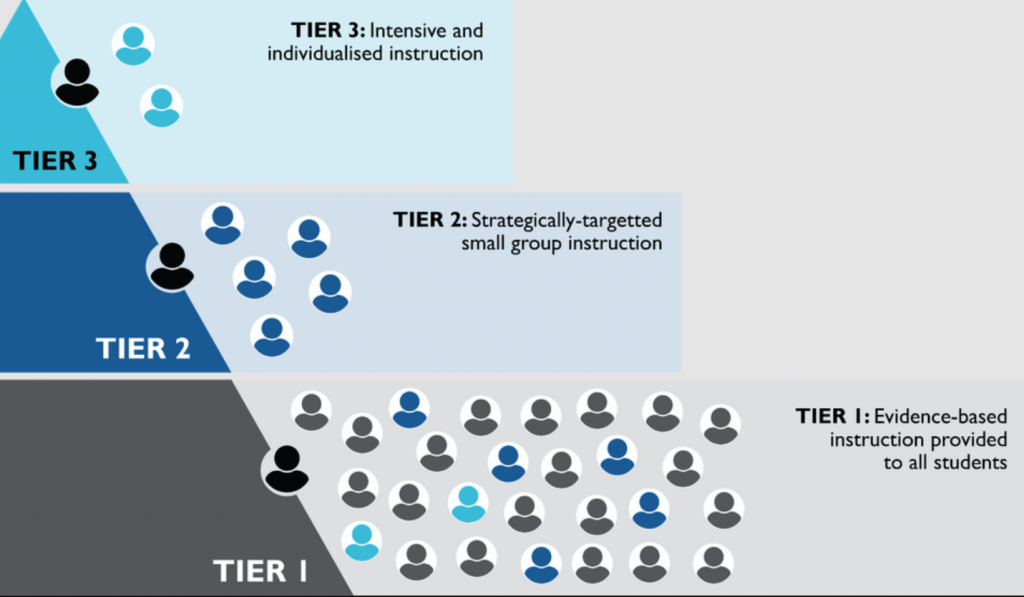Key Information
- Learning to read is foundational to all other learning.
- Every young Tasmanian should have the reading skills they need for life when they leave our school system.
- From 2024 all Tasmanian Government schools are beginning to use a new approach to the teaching of reading.
Our commitment
Since June 2023, the Department for Education, Children and Young People has been working towards implementing the minimum schooling guarantee for reading, recommended in the Literacy Advisory Panel’s Final Report to Government: Lifting Literacy (PDF, 4.9 MB).
- By 2026, all students in Tasmanian Government schools will benefit from a structured (systematic and explicit) and evidence-based approach to the teaching of reading for all students across all school years, and
- A multi-tiered system of supports (MTSS) incorporating quality tier one instruction and evidence-based interventions. This will be appropriately supported and informed by ongoing monitoring, screening and assessments that keep the learner at the centre.
These measures make Tasmania the first jurisdiction in Australia to mandate an evidence-based approach to reading across our whole school system.
Teaching reading based on the evidence

Children aren’t born with natural skills in reading, like they are for walking and talking. They must develop new pathways in their brain to master this skill.
National and international research shows that the process of learning to read can be broken down into lots of individual skills.
Cognitive scientists can clearly see that teaching all these individual skills systematically and explicitly, sets up the pathways in our brain for reading.
This approach is effective for beginning, struggling and advanced readers. Importantly, it is an engaging and fun way for all students to learn.
This is what informs and underpins Tasmania’s new approach to reading.
The foundational elements of reading can be broken down into six skills – often referred to as:
The Big Six
- Oral language – Talking and listening provides a foundation for learning to read
- Phonological awareness – Being able to recognise the individual sounds in speech
- Phonics – Being able to recognise the relationship between letters and sounds
- Vocabulary – Knowing the meaning of a word makes you more likely to be able to read it.
- Fluency– This is not just about being able to read quickly, it’s about reading in a way that shows you understand the meaning.
- Comprehension – understanding what you read.
From Prep to Year 2, this approach to teaching reading starts with phonics.
In upper primary school and secondary school there is a greater focus on vocabulary, fluency and comprehension.
Having a consistent approach, where every school teaches these six skills, means everyone in our school system, from educators to students will have a common language and understanding.
Teachers and students will be able to move between schools and know that the way reading is taught will be the same.
Intervention and support for the students who need it

All students learn to read at different rates and need different levels of support to become confident readers.
Research by the Australian Education Research Organisation (AERO), has found that a tiered approach to intervention, known as a multi-tiered system of supports (MTSS), is the most effective way to support students not making expected progress.
MTSS gives schools a structure for planning how they will identify and support students who are struggling.
The MTSS model has three tiers
- In Tier 1, all students are taught reading in a quality evidence-based way.
- In Tier 2 more intensive reading support is provided in small groups to students who need extra help with specific skills.
- In Tier 3 more intensive, more frequent, tailored intervention is provided to those students who need it.
To set up tiered intervention all students are screened to determine their capability in reading and writing.
Using that data, schools can determine which students need intervention and the type of intervention they need.
The goal of providing identified students with extra support in Tier 2 and 3 is to boost their skills so they no longer need intervention.
Training our Teachers
From 2024 all Tasmanian Government schools have begun planning and implementing this new approach to the teaching of reading.
All teachers and school staff who support the teaching of reading are undertaking foundational training in evidence-based reading instruction and MTSS, developed during 2023 in partnership with Deakin University and the University of Tasmania.
Phonics
In all Tasmanian primary schools, phonics is taught in the early stages of learning to read.
Students are explicitly taught the relationship between letters and sounds. This gives them the skills to decode words when they see them in print.
In the early stage of learning how to read, students practise these decoding skills with Decodable readers.
These specially designed “readers” allow students to practise and reinforce their letter-sound knowledge.
The Year 1 Phonics Check
If your child is in Year 1, they will participate in the Year 1 Phonics Check. This happens in Term 3 each Year.
This quick check looks at how well students can ‘decode’ written words and whether they are making expected progress in reading.
Teachers will use this information to identify and provide extra support to those students who need it.
As part of the screen, students will be asked to read 40 words to their teacher – 20 real words and 20 made-up words. The teacher will listen to how students sound out the letter and letter groups and blend these sounds together to make words.
Using made-up words like “jound” is important as students cannot read these words from memory, they have to use their decoding skills.
How can I support my child?
Students don’t need to prepare for the Year 1 Phonics Check. It’s not a test. It’s a check-in on their progress. You can let your child know that the Check includes real words and made-up words.
The best way to support your child to become a confident reader is to spend time reading with them. Even a few minutes a day can make a difference to their learning.
For more tips on reading with your child, check out Let’s Talk Reading at talk.tas.gov.au
